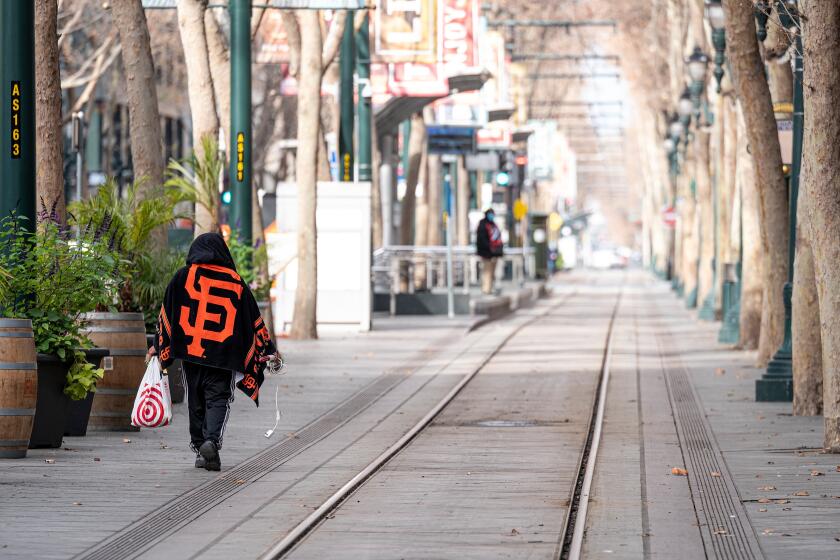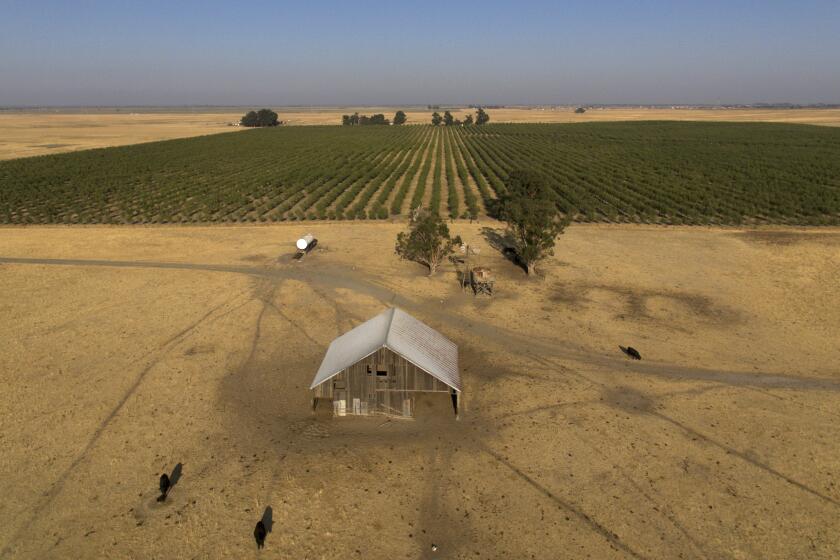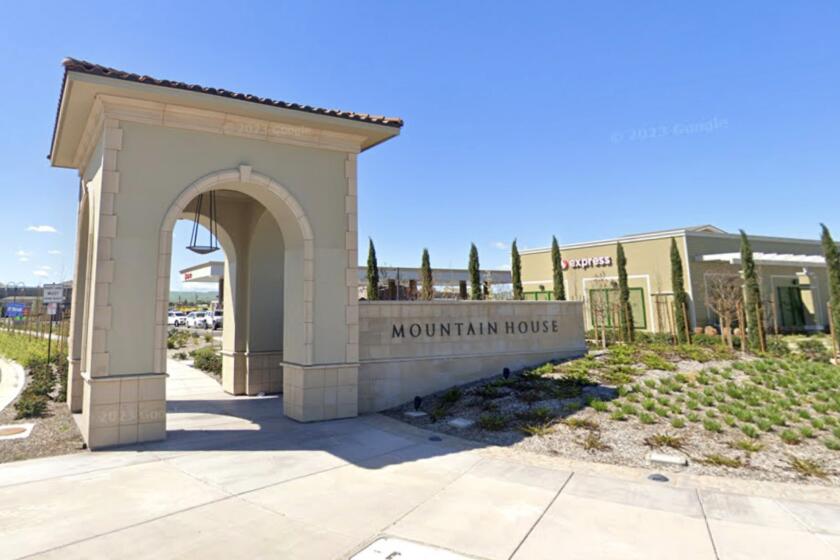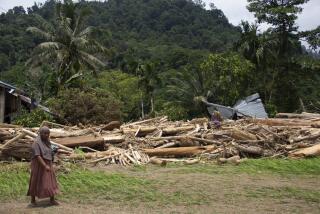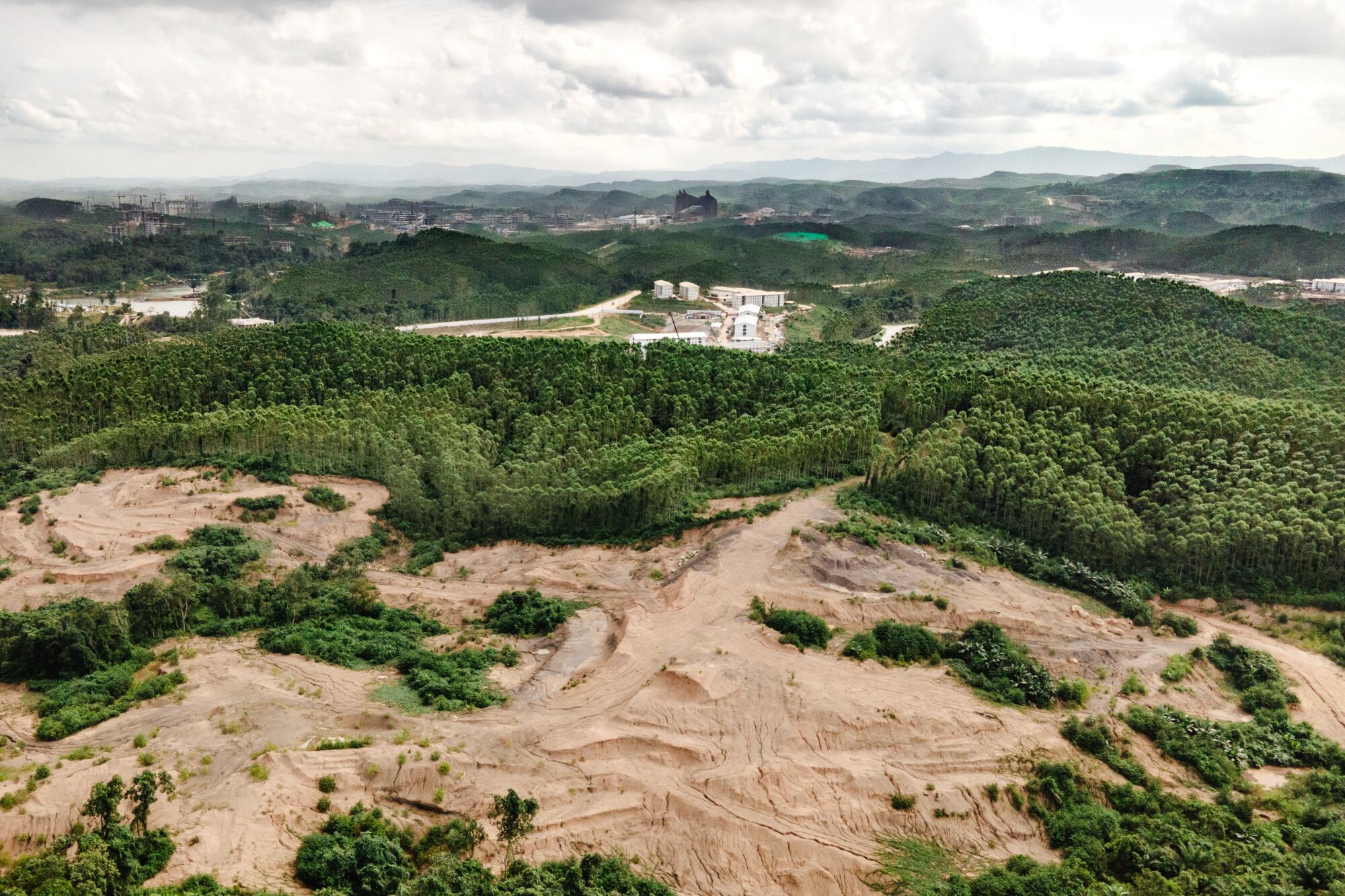
- Share via
NUSANTARA, Indonesia — Like many of the world’s megacities, Jakarta has mega-problems. Two-hour commutes are a way of life. Air pollution is a serious health hazard. Drinking water is running out. On top of all that, the longtime Indonesian capital — population 11 million, plus twice that many in the ever-expanding suburbs — is sinking.
And so in 2019, the country’s president announced a bold plan to carve a new capital out of the rainforest 800 miles away across the Java Sea. He named the city Nusantara — or “archipelago” — for the 17,508 islands that make up the world’s fourth-most populous nation.
In his vision, the $32-billion city would begin life as the new seat of government, and over the next two decades attract millions of people as a high-tech, zero-carbon metropolis that would relieve crowding in Jakarta and serve as a model of urban innovation for the rest of the world.
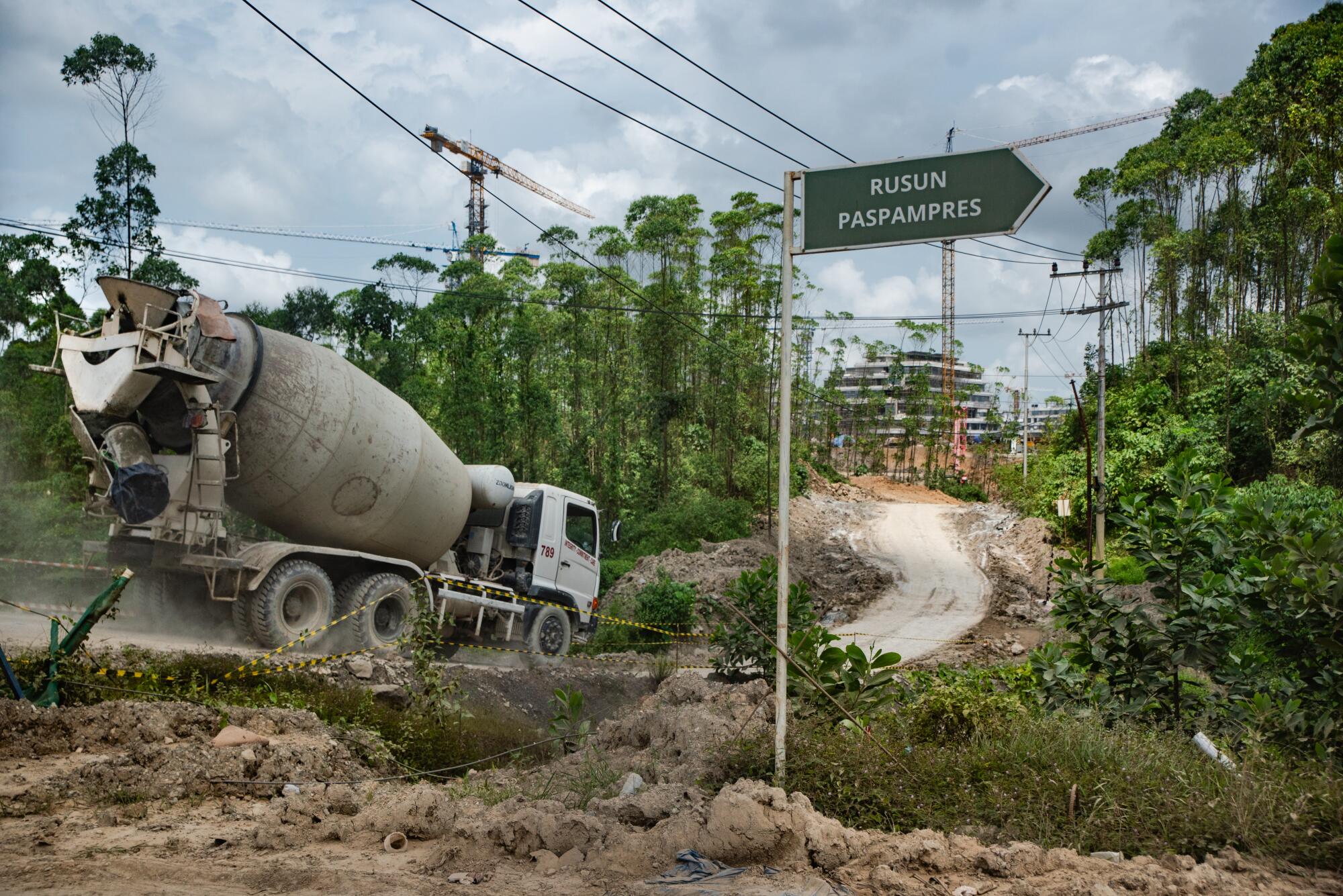
Those plans remain a distant dream. After two years of construction, the city consists of bumpy dirt roads, towering cranes, dust-coated shells of unfinished apartment complexes and government offices. At its center is the only structure that has been completed: a massive presidential palace shaped like an eagle.
For the record:
9:31 a.m. Aug. 16, 2024An earlier version of this article reported that Nusantara would replace Jakarta as the capital of Indonesia on Saturday. The government has not set an official date for the transition.
The president, Joko Widodo, moved into his new office late last month. The first wave of civil servants is scheduled to arrive in September. The government could officially make Nusantara the new capital as soon as this fall.
Two new Indonesian restaurants indicate that the Southeast Asian cuisine is gaining popularity across Los Angeles.
“It’s really the first capital in the world built from scratch,” said Ruhimat Soerakoesoemah, a senior official at the Economic and Social Commission for Asia and the Pacific, a United Nations organization. “This is basically ground zero. You’re looking at pristine forests. They have to somehow use that area and cut down trees, divide mountains and all that just to build human settlement.”
But plagued by political opposition and construction woes, Nusantara has also become a warning of the profound challenges that come with creating a viable city out of nothing.
: :
More than half of the world’s 8 billion people live in urban areas, a proportion that the U.N. expects to reach 70% by 2050. As cities fill up, many countries are building new ones.
“We are in the midst of a new-cities fever,” said Sarah Moser, an expert on urban expansion and a professor at McGill University in Montreal. “Established cities in the Global South are kind of at a breaking point. People are desperate.”
Moser estimates that as many as 200 new cities are being planned or are under construction in 50 countries — not including China, which has been on its own building spree for decades, with several hundred or more cities still in the works.
Whether a new city succeeds or fails depends on myriad factors, including funding, government support and location.
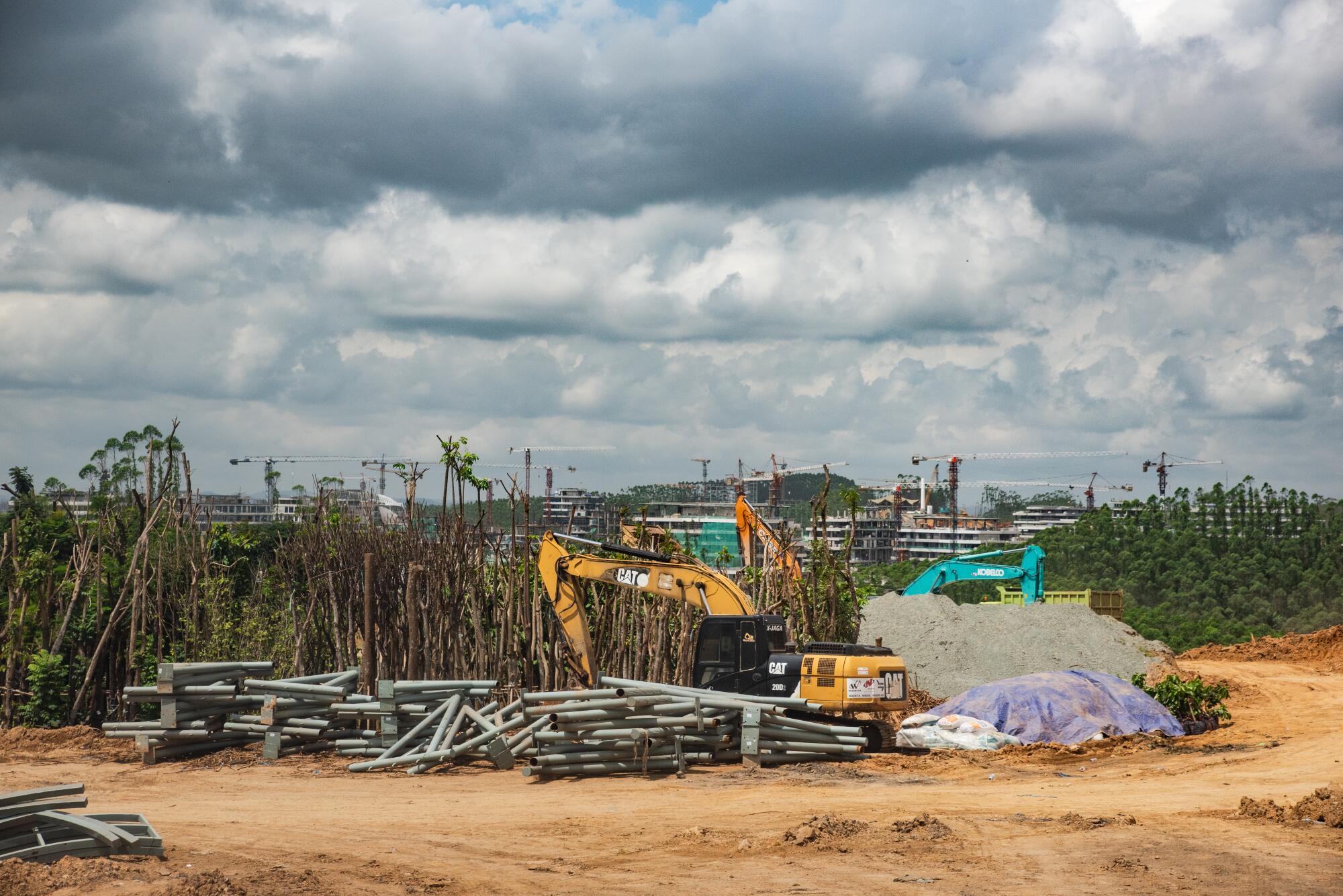
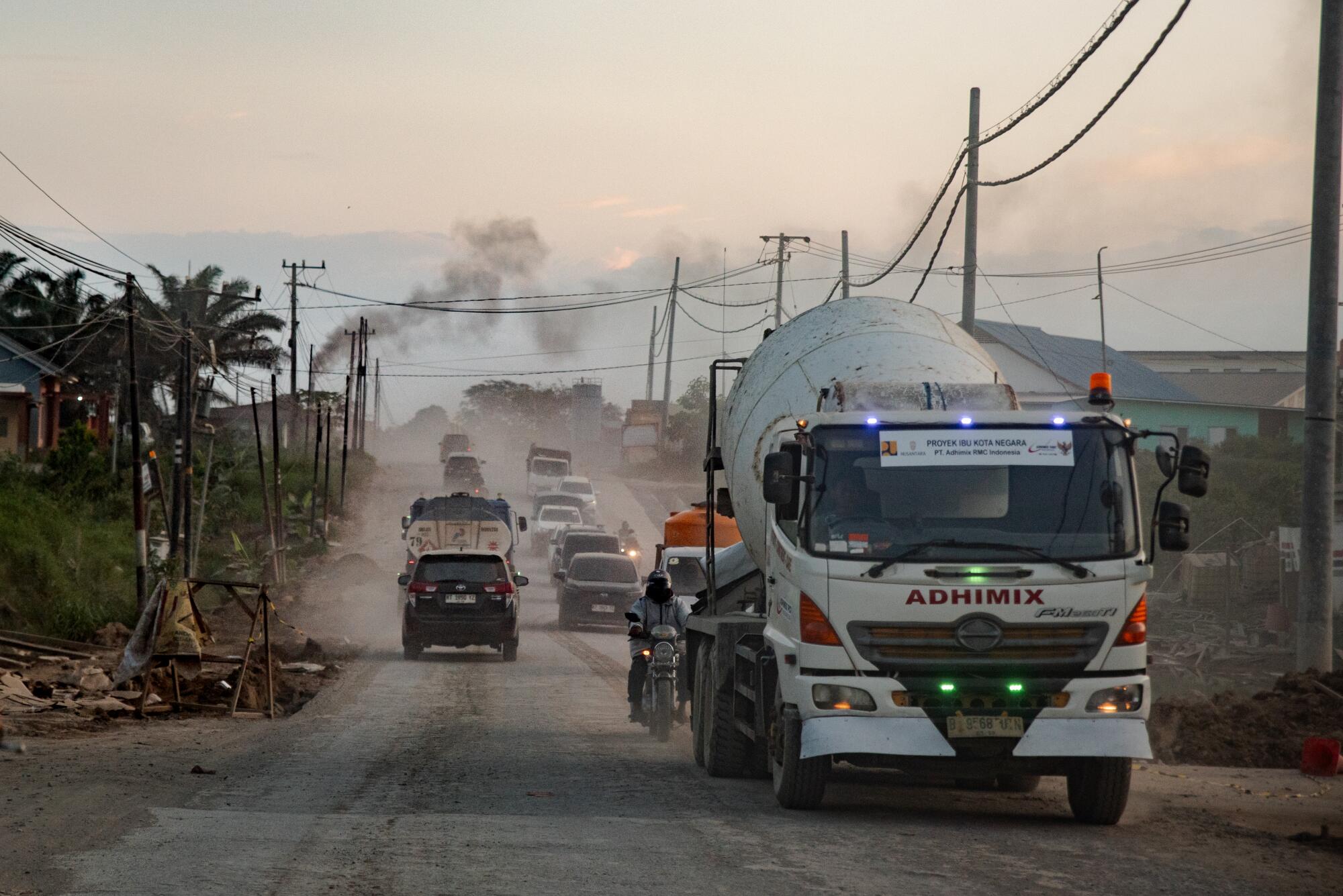
“To what extent can you plan for a socially productive and coherent city is a fundamental dilemma,” said Philipp Rode, executive director of LSE Cities, a research center at the London School of Economics and Political Science. “It takes a long time, and many, many resources to make it work.”
One source of inspiration for Indonesia is Putrajaya, which replaced Kuala Lumpur as the administrative capital of Malaysia in 1999. But located just 15 miles away, with a population of about 100,000, it was a far less ambitious project than Nusantara.
Cautionary tales abound when it comes to new cities. Two decades after Naypyidaw became the capital of Myanmar, it remains largely deserted, while 200 miles away, the population of the former capital, Yangon, has swelled 42% to 5.7 million people. And in Egypt, an unnamed capital has been under construction for nearly a decade about 30 miles east of Cairo.
In a region known for NIMBYism, San Jose is one of the only cities with the politics to build dense housing by rezoning the sprawl.
In California, tech billionaires fed up with San Francisco want to build a new city for 400,000 people on farmland 60 miles to the northeast. But the project has been put on hold amid environmental concerns and clashes with locals.
“Starting a new city from scratch is always 1,000 times harder than what people think it will be,” Moser said.
Indonesian leaders have debated moving the capital from Jakarta since independence in 1945.
Jakarta was originally a Dutch outpost, built to accommodate hundreds of thousands of people. But the population quickly grew to several times that as people came from across the country in search of work.
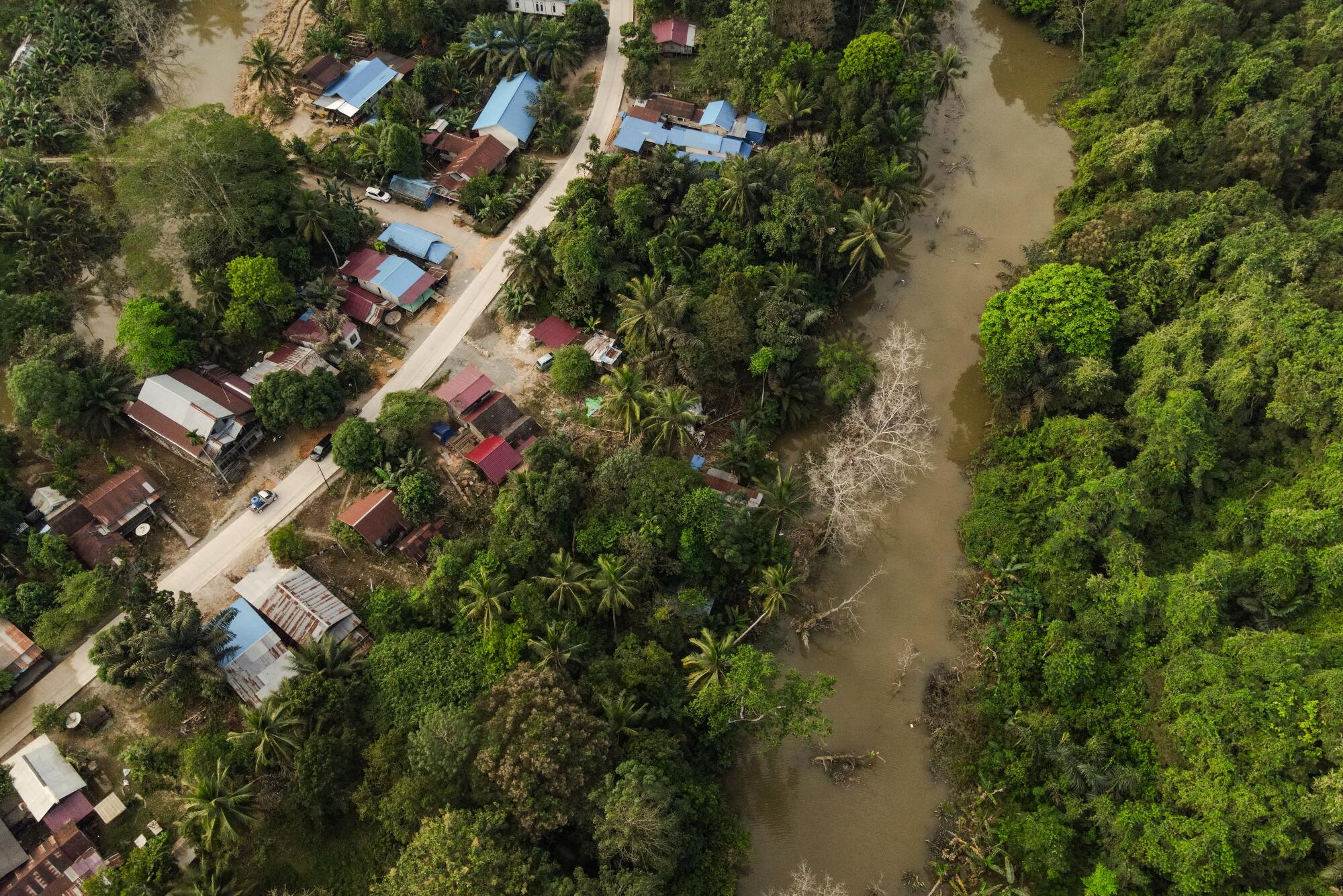
Franz Sidjabat arrived from the Indonesian island of Sumatra in 2005 anticipating a better life.
Today, he is more excited at the prospect of leaving. In the last two decades, he has been robbed on public transit, waded through the street in waist-deep floods and spent endless hours stuck in traffic. Now 40, he still can’t afford to buy a home in the city.
“I don’t want to stay in Jakarta,” said Sidjabat, who works in immigration at the Ministry of Law and Human Rights.
Without a family of his own, he could be among the first civil servants transferred to Nusantara: “I think that Indonesia needs this kind of change.”
Because Jakarta has grown far faster than its municipal water system, a majority of residents now pump their water from the ground. That has accelerated the sinking of the city — up to 8 inches a year in places — with experts predicting that some neighborhoods could be underwater by 2050.
On a wide stretch of land bisected by India’s Krishna River, bananas, sugarcane, cotton, guavas and commercial flowers once sprung from dark soil that people described as a farmer’s paradise.
Near the northern harbors of Jakarta Bay, flooding is a nightly occurrence in many homes.
Arianto, a 42-year-old who takes tourists on boat trips and, like many Indonesians, uses one name, explained that he and his nine other family members all sleep on the second floor of their narrow, four-bedroom house because seawater often pools in their downstairs rooms.
When the tide recedes, the water in the house drains through pipes into the streets. But every year, the flooding gets worse. In December, the heart of the rainy season, the water often reaches his knees.
A nearby mosque where he used to play as a child is partly submerged. A concrete sea wall has been fortified three times in Arianto’s lifetime.
“It helps, but it’s water. It leaks,” he said. “We are getting used to it.”
: :
On the island of Borneo, the district of Sepaku, at least a two-hour drive from any city, was known for its forests of mangrove, acacia and eucalyptus. Tens of thousands of people lived in scattered villages. Residents farmed, fished or traveled for work in coal mines or oil fields.
Then in August of 2022, bulldozers arrived and the forest started to disappear as some 6,000 acres were cleared. Posters put up by the government advertised a “Future Smart Forest City” with images of a sprawling campus of shiny buildings and verdant foliage.
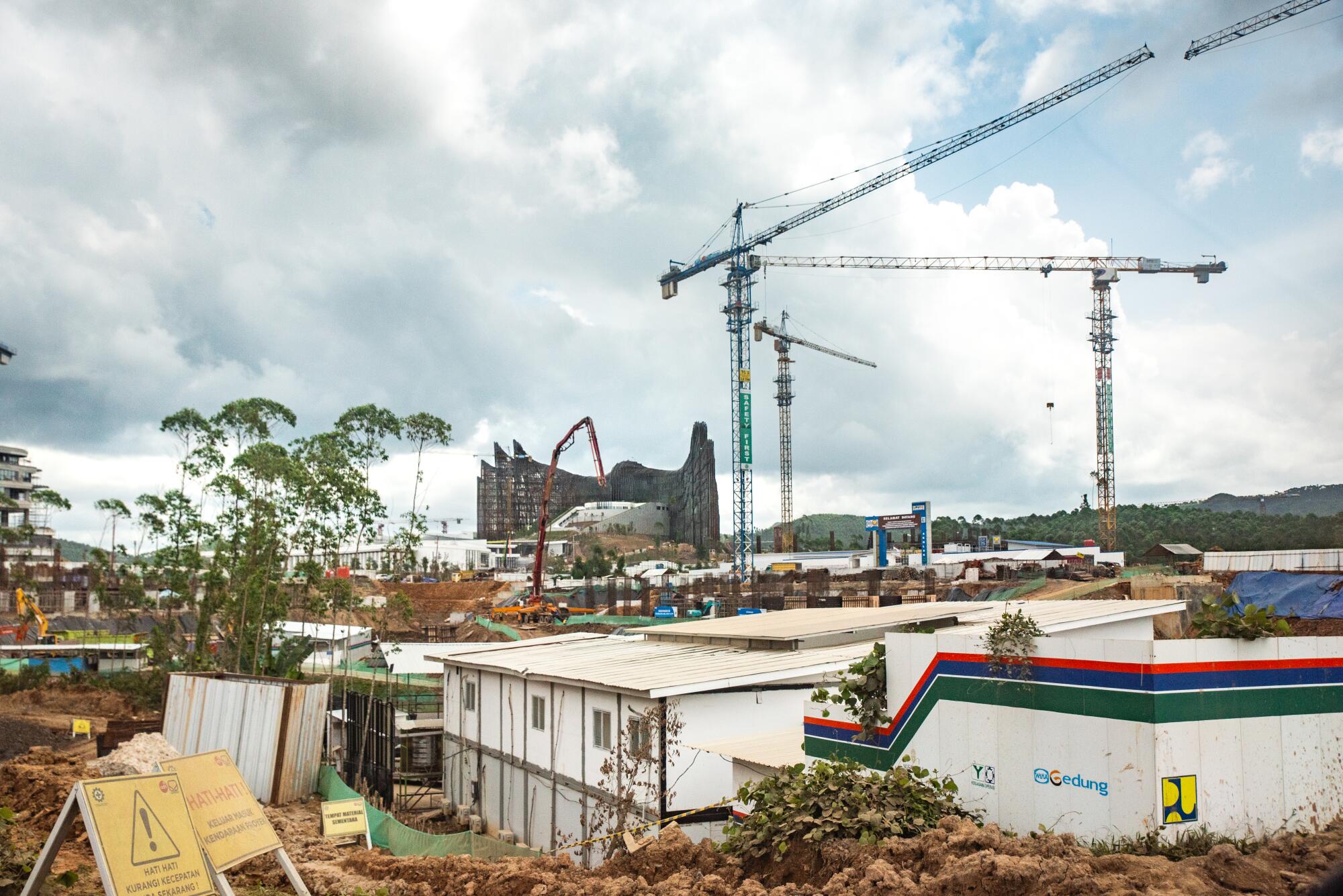
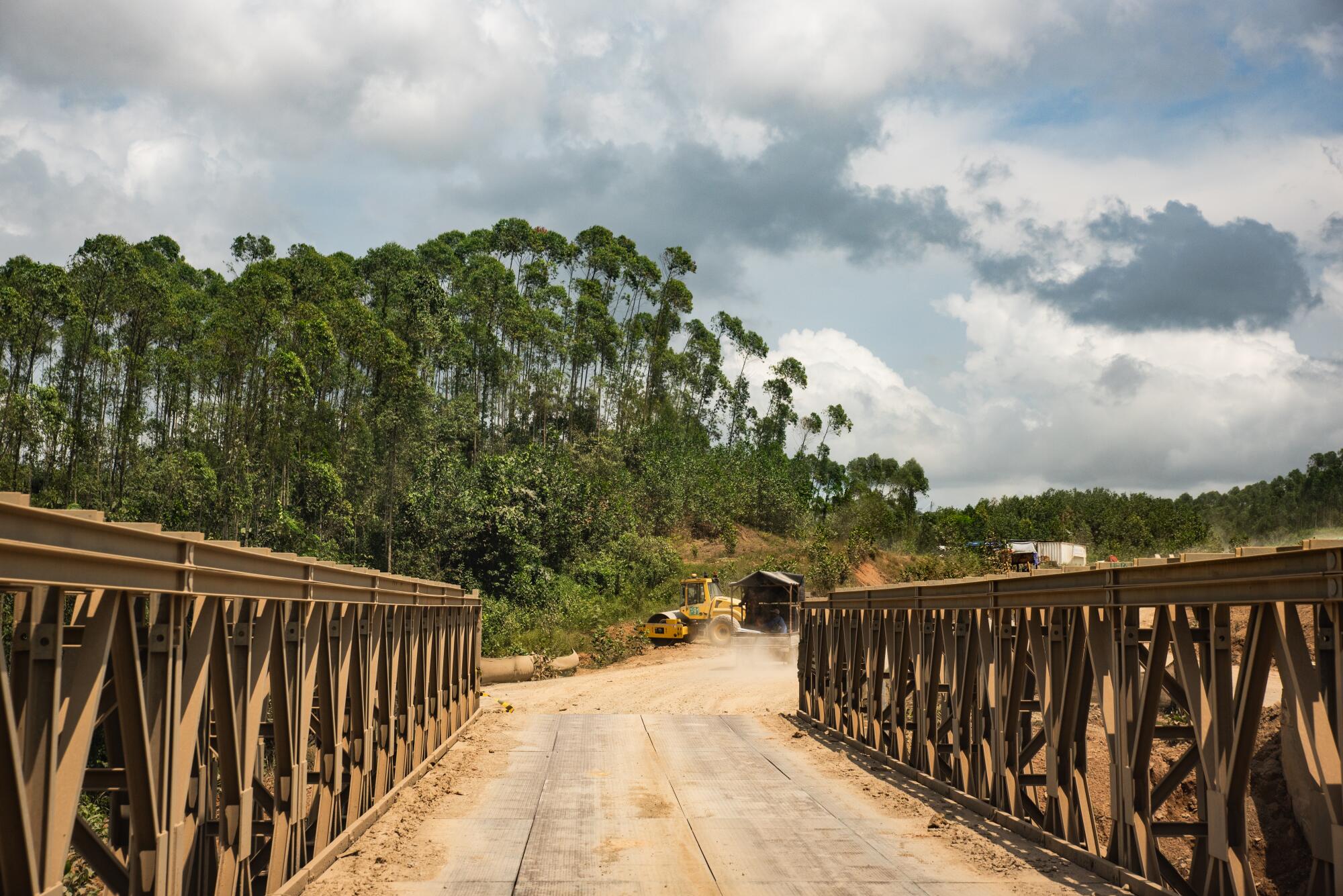
Some villagers welcomed the economic boost from the influx of workers.
Nur Wahyudi, who was laid off from his coal mining job during the pandemic lockdown, started driving government officials around the village as they sought to acquire land rights.
“I was happy,” said the 32-year-old. “I never thought the capital city would be here.”
Titin, 33, relocated from the closest city, Balikpapan, two years ago and opened a fruit store. It wasn’t long before she had competition from other newcomers.
The move has come with unfamiliar challenges. She has to pay for water by the tank, since the area still lacks pipes. With limited garbage service, her husband has to drive rotten fruit to Balikpapan for disposal. Rents have skyrocketed, and her temporary living quarters — the back room of her shop — floods when it rains.
“It’s not convenient here,” Titin said. “There have not been any improvements since I came.”
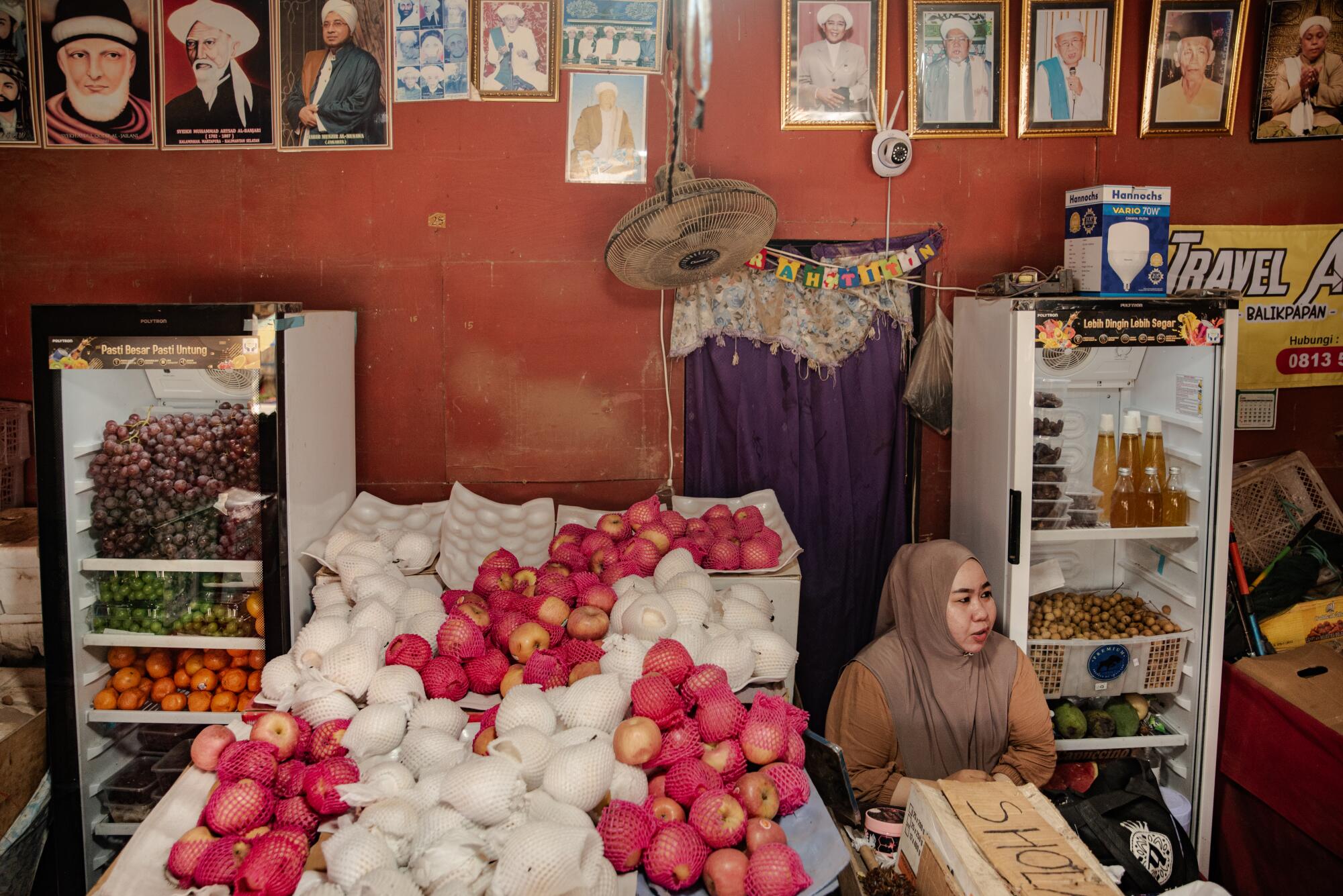
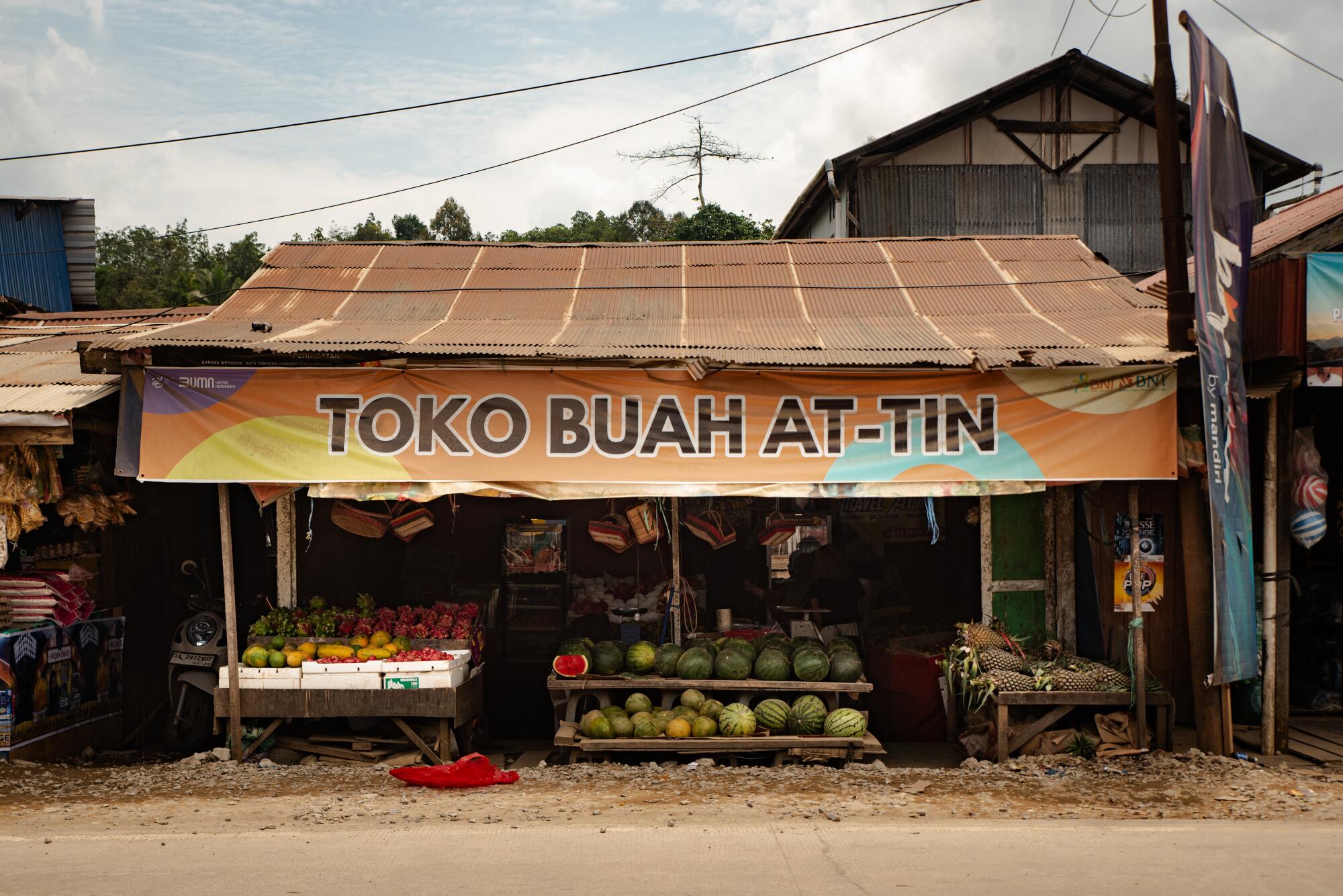
Workers have raced to complete enough of the city to meet the president’s timetable and officially make it the capital this week. An employee for the Ministry of Public Works and Housing, which oversees the construction, said three years of work have been compressed into one.
“Usually you would build the roads first, then build the housing, or make the water available, then the housing,” said the employee, who spoke on condition of anonymity because she feared using her name could get her fired. “But what is happening right now is everything is being built at the same time.”
Indonesia could be trading one environmental disaster for another when it relocates its capital from Jakarta to East Kalimantan, a hotbed of coal mining, gas extraction and palm oil production on the giant island of Borneo.
It is common to hear complaints that hasty urbanization is causing big-city problems — relatively speaking. There is a serious housing shortage for workers. One restaurant had no ice or fruit the other day because the employee sent to buy them that morning was stuck in traffic.
Tasmi, 55, and her husband, Prayetno, 60, used to buy pepper from local farmers and sell it to a distributor, earning enough to build a four-bedroom house and buy an SUV.
But the government killed their business when it claimed the pepper farmers’ lands for Nusantara. The couple recently started selling rice from a tarp on the street, making less than a fifth of their old income. Their daughter, a college graduate, helps them sell eggs.
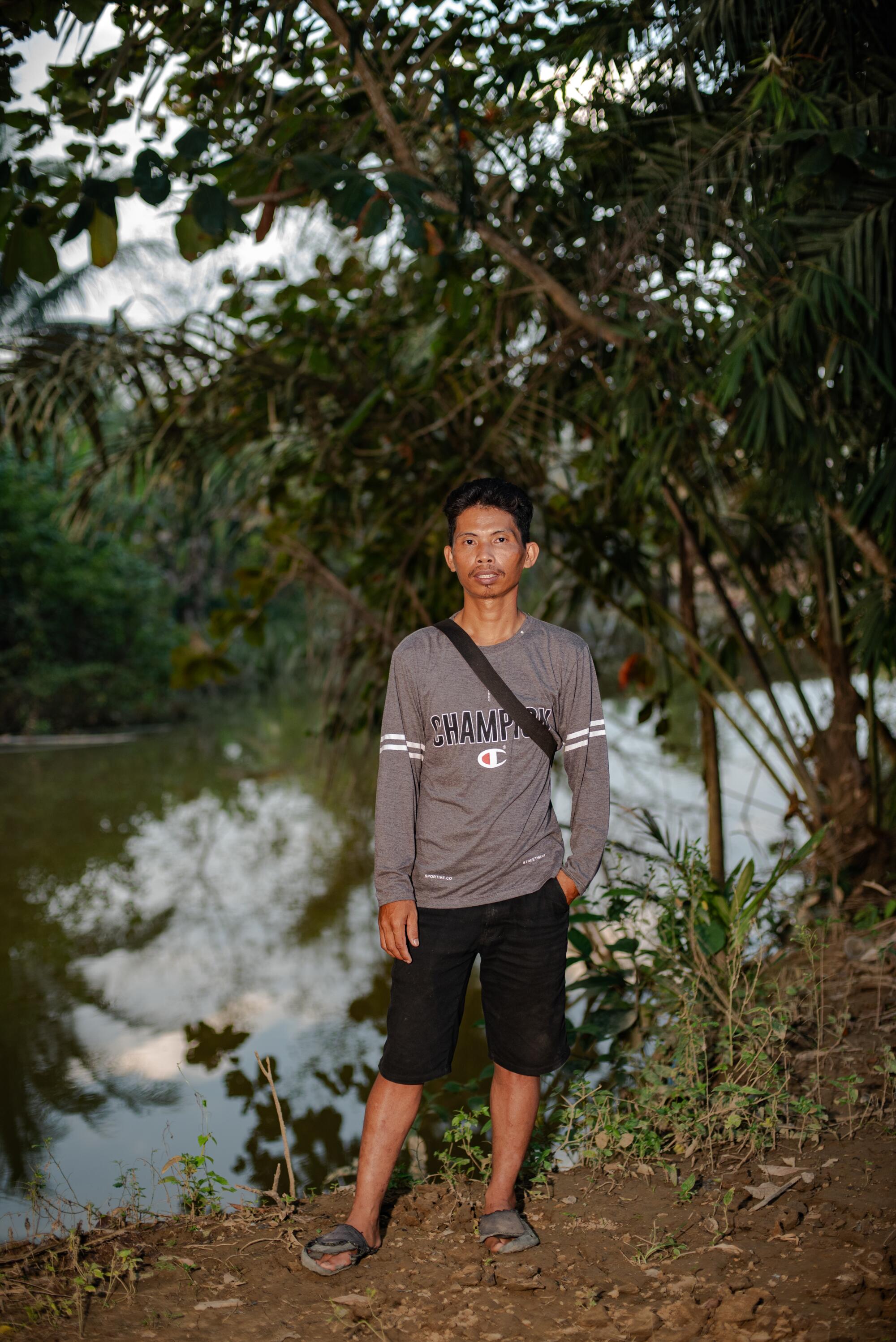
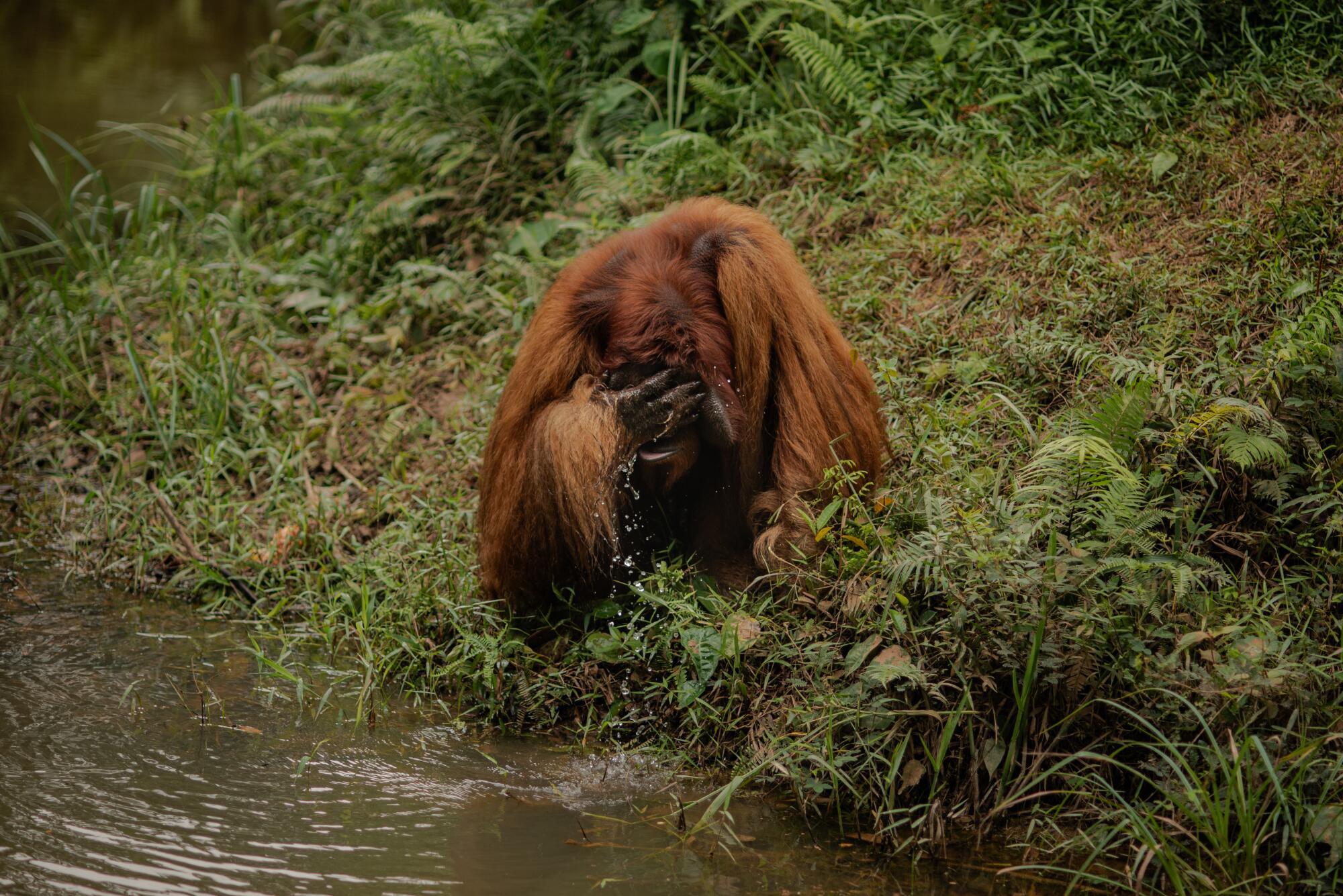
“Of course there will be more impact, especially for agriculture around here,” Prayetno said.
Environmentalists have warned that as the capital expands, it may spill over into the habitats of endangered species such as proboscis monkeys, orangutans and gibbons.
Indigenous groups worry that the government will claim the land that they have long called home. The project has already altered rivers, disrupting fishing and causing flooding when it rains.
Arman Jais, a 38-year-old farmer and member of the Balik tribe, said he is routinely kept awake at night by the nearby construction of a dam for the new capital. The commotion reminds him of his one and only visit to Jakarta. Even in his hotel room, he had trouble sleeping in the stifling city air, and he doubted that he could survive the crowds and traffic.
“I couldn’t imagine if the new capital turns into Jakarta,” he said. “As Indigenous people, that’s what we are afraid of.”
: :
The Indonesian president, popularly known as Jokowi, has been unrelenting in his drive to build Nusantara, rushing to get a foothold there before he terms out of office in October. On Saturday, he will lead an Independence Day celebration there.
“He wanted to develop the capital up to the point of no return,” said Yanuar Nugroho, his former deputy chief of staff. “His strategy is working all-out, around the clock, so when he leaves the administration, whoever the president is does not have the chance to say no.”
In perhaps his boldest political move, Jokowi betrayed his own party in February’s presidential election to endorse a competing candidate who promised to press on with the new capital. The ticket, which included Jokowi’s eldest son as the vice presidential candidate, emerged victorious.
The investors proposing a new city in rural Solano County will pull their measure off the ballot for at least two years while they fund a full environmental review.
This week, on a visit to the new presidential palace for the first Cabinet meeting there, the president-elect, Prabowo Subianto, reiterated his commitment to the city.
“We will complete it well because it is really needed,” he said.
But even as the government moves there, it is far from certain that the city will achieve the economic success needed to fund its continued development. The plan is to clear a total of 633,000 acres. The hope is that when construction is completed in 2045, the population of Nusantara will be 1.9 million.
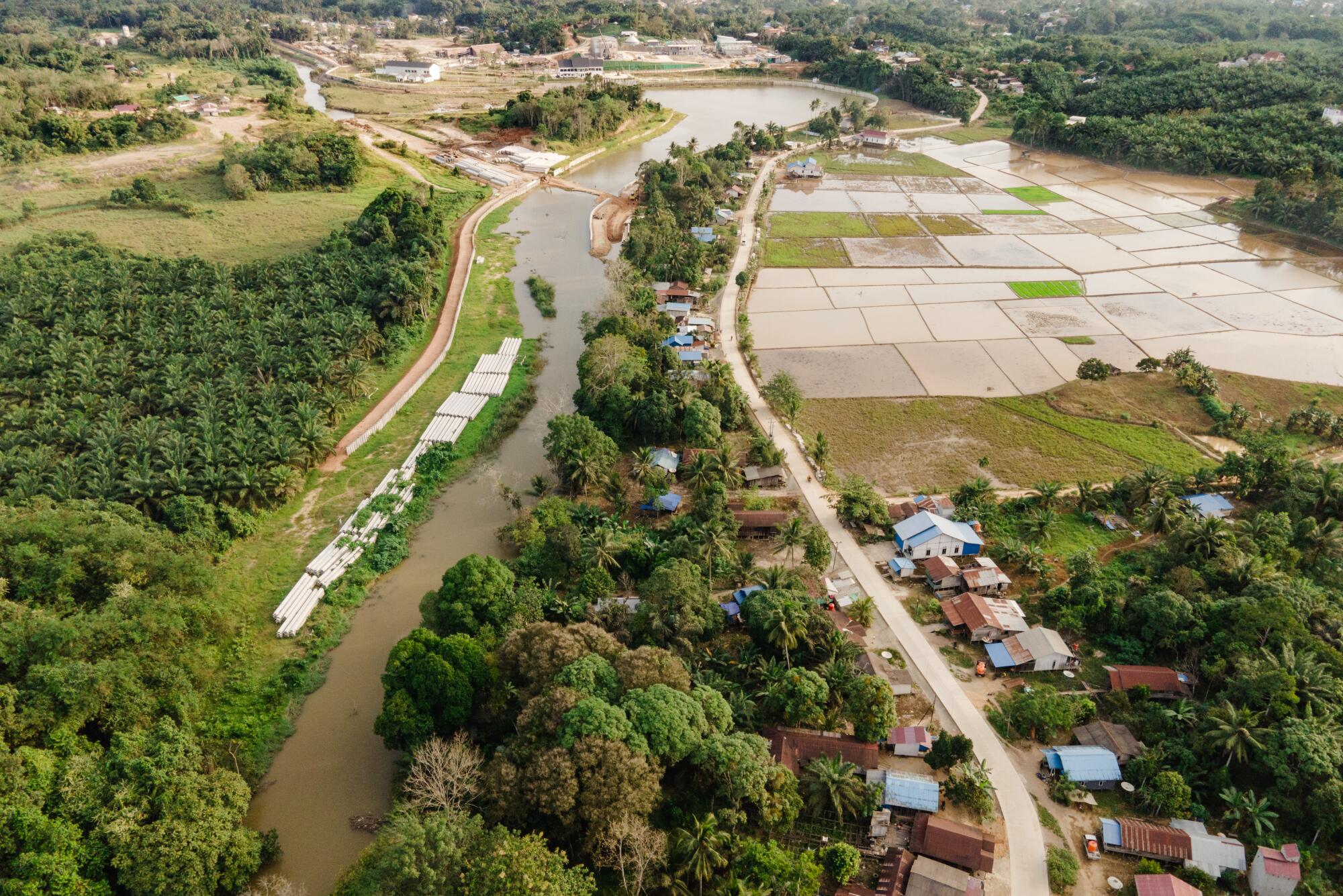
So far the government has secured a total of $3.6 billion in private funding. But one early investor, SoftBank Group Corp., withdrew from the project in 2022 without explanation. That spooked other corporate investors, who are meant to account for 80% of funding.
“It’s always difficult to build a city when there is no economic activity,” said Imaduddin Abdullah, a researcher at the Institute for Development of Economics and Finance in Indonesia.
The results are still coming in for the presidential primary, but it’s looking like California could get a new city soon, all thanks to voters.
While the government has presented Nusantara as an answer to Jakarta’s problems, there are many skeptics.
Among them is Hendricus Andy Simarmata, an urban planner and informal advisor in discussions to move the capital. He said that the relocation of thousands of civil servants could help a little, but that the government should limit growth in Jakarta by building universities and industrial parks elsewhere.
“If the government could manage this rapid urbanization properly in greater Jakarta, then we wouldn’t need to move,” he said.
In any case, Nusantara seems unlikely to have much impact on crowding in the rest of the country. Over the next two decades, Indonesia’s population is expected to grow from 276 million to 324 million. It will be heavily concentrated in cities.
Yang is a Times staff writer and Sijabat a special correspondent.
More to Read
Sign up for Essential California
The most important California stories and recommendations in your inbox every morning.
You may occasionally receive promotional content from the Los Angeles Times.

